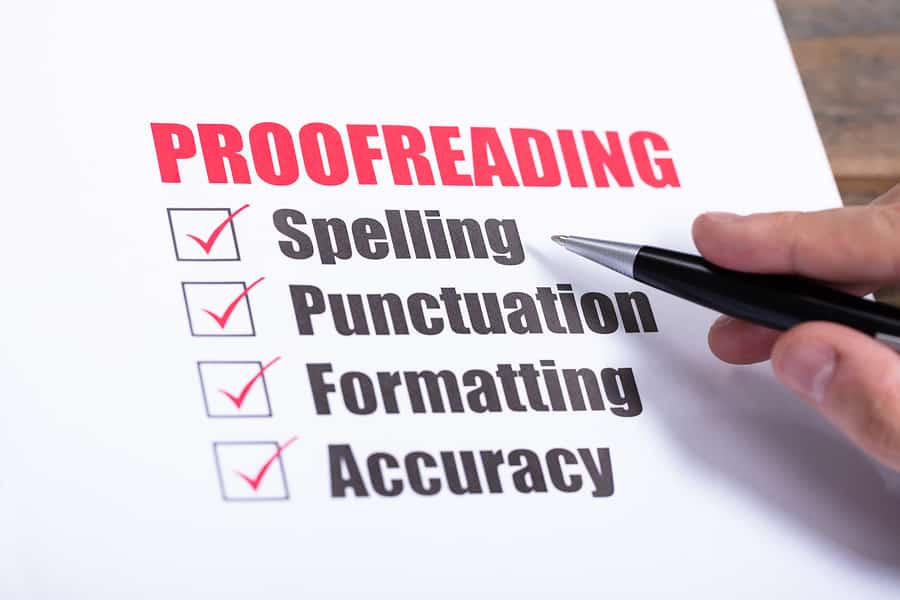Title: The Art of Proofreading: Ensuring Perfection in the Written Word
Introduction: In the realm of written communication, accuracy and clarity reign supreme. Whether it’s a novel, a research paper, a business proposal, or even a simple email, every word carries weight. However, even the most skilled writers can overlook errors, typos, and inconsistencies in their work. This is where the unsung hero of the writing process steps in: the proofreader. In this article, we delve into the essential role of proofreaders, exploring their skills, techniques, and significance in the pursuit of perfection in the written word.
Understanding the Role of a Proofreader: At its core, proofreading is the meticulous process of reviewing written content to identify and correct errors in grammar, spelling, punctuation, syntax, and formatting. Unlike editing, which focuses on improving the overall quality and coherence of the text, proofreading is primarily concerned with ensuring correctness and consistency. A proficient proofreader possesses a keen eye for detail, a thorough understanding of language conventions, and an unwavering commitment to precision.
The Art of Spotting Errors: Effective proofreading requires more than just a cursory scan of the text; it demands a systematic approach and a comprehensive understanding of language mechanics. Proofreaders meticulously examine each word, sentence, and paragraph, scrutinizing for inaccuracies and inconsistencies. They pay close attention to spelling errors, grammatical mistakes, misplaced punctuation marks, and formatting discrepancies. Moreover, they are adept at detecting subtle nuances in language usage, ensuring that the text maintains clarity and coherence.
Utilizing Tools of the Trade: While the human eye is indispensable in the proofreading process, modern technology has introduced an array of tools to aid in the task. Spell-checkers, grammar-checkers, and plagiarism detectors are among the arsenal of resources available to proofreaders. These tools can expedite the process and catch errors that might elude even the most vigilant human proofreader. However, they are not foolproof and must be used judiciously, complementing rather than replacing human expertise.
Maintaining Consistency: Consistency is paramount in written communication, ensuring that the message is conveyed clearly and coherently. Proofreaders play a crucial role in maintaining consistency throughout the text, adhering to established style guides, formatting conventions, and linguistic norms. They ensure that spelling, punctuation, capitalization, and terminology are used consistently across the document, thereby enhancing its readability and professionalism.
Navigating Language Variations: In a globalized world, written content often transcends linguistic boundaries, reaching diverse audiences with varying language preferences. Proofreaders must navigate this linguistic landscape adeptly, accommodating different dialects, spelling conventions, and grammatical structures. Whether it’s British English versus American English or formal versus informal language, proofreaders tailor their approach to suit the intended audience and context, ensuring that the message resonates effectively.
Collaborating with Writers and Editors: Effective proofreading is a collaborative endeavor, involving close coordination with writers and editors throughout the writing process. Proofreaders work alongside writers to clarify ambiguities, resolve inconsistencies, and refine the text to meet the desired standards. They also collaborate with editors to ensure that the final product meets the publication’s guidelines and adheres to the designated style preferences. This collaborative synergy fosters a culture of excellence and ensures that the written content is polished to perfection.
The Importance of Attention to Detail: At its essence, proofreading is a testament to the power of attention to detail. Every comma, every hyphen, and every apostrophe matters in the quest for linguistic precision. Proofreaders possess an innate ability to detect even the subtlest of errors, ensuring that no typographical mistake or grammatical gaffe goes unnoticed. Their meticulous scrutiny not only enhances the quality of the written content but also upholds the integrity of the author’s message.
Conclusion: In the ever-evolving landscape of written communication, the role of the proofreader remains indispensable. Armed with a discerning eye, a deep-seated passion for language, and a commitment to excellence, proofreaders uphold the highest standards of linguistic precision. They are the unsung heroes who ensure that every word shines brightly, every sentence resonates clearly, and every message leaves a lasting impression. In the age-old pursuit of perfection in the written word, the proofreader stands as a steadfast guardian, preserving the integrity and clarity of human expression.
